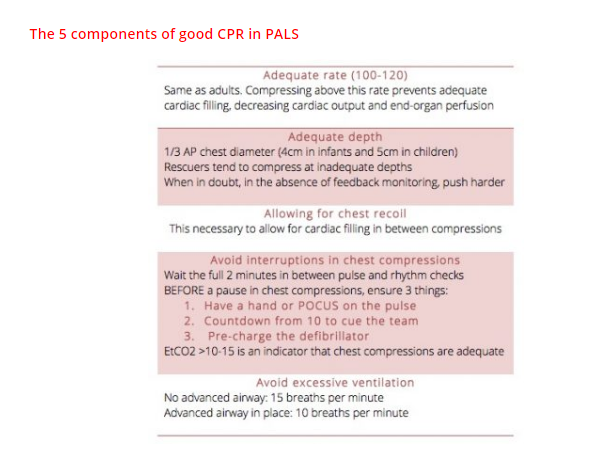All that follows is from the section on pediatric basic life support (BLS) in Episode 93 – PALS Guidelines of Emergency Medicine Cases:
Monitoring and ensuring high quality of CPR:
Our experts recommend the following strategies in order to ensure high quality CPR during a resuscitation:
- EtCO2: High quality CPR will produce EtC02 of 10-15 mmh Hg as a marker of good pulmonary blood flow and cardiac output.
- Using pads with accelerometers that monitor both the rate of compressions and depth of compressions and provide audio-feedback: “press harder, press faster”.
- Handover responsibility to a team member to monitor the quality of CPR during the resuscitation and provide feedback on ventilation and compressions.
The three experts in this podcast also remind us that the key to high quality CPR is to avoid unnecessary interruptions in cardiac compressions and three ways to minimize interruptions are:
- Place the hand or POCUS probe on the artery prior to stopping compression for the pulse check.
- Precharge the defibrillator before you stop cardiac compressions.
- Count down from ten so that you can immediately defibrilate when cardiac compressions are stopped.
Resources:
(1) Part 11: Pediatric Basic Life Support and Cardiopulmonary Resuscitation Quality
2015 American Heart Association Guidelines Update for Cardiopulmonary Resuscitation and Emergency Cardiovascular Care [PubMed Abstract] [Full Text HTML] [Download PDF]. Circulation. 2015 Nov 3;132(18 Suppl 2):S519-25. doi: 10.1161/CIR.0000000000000265.





